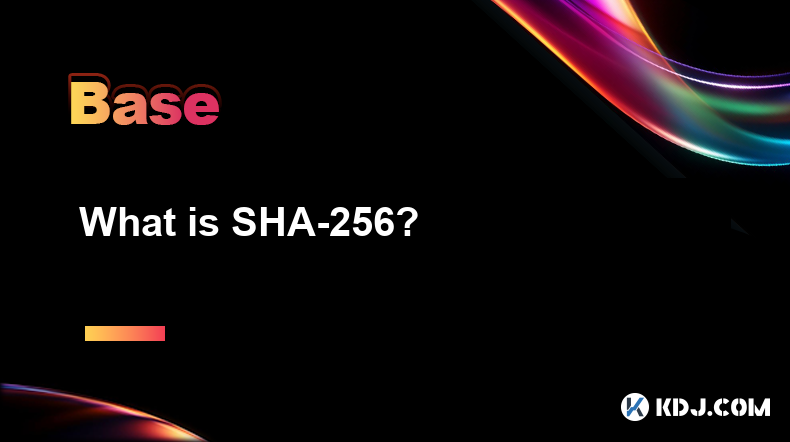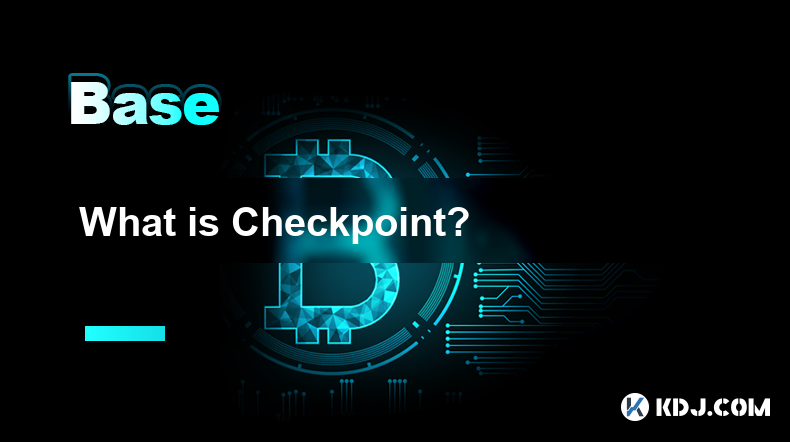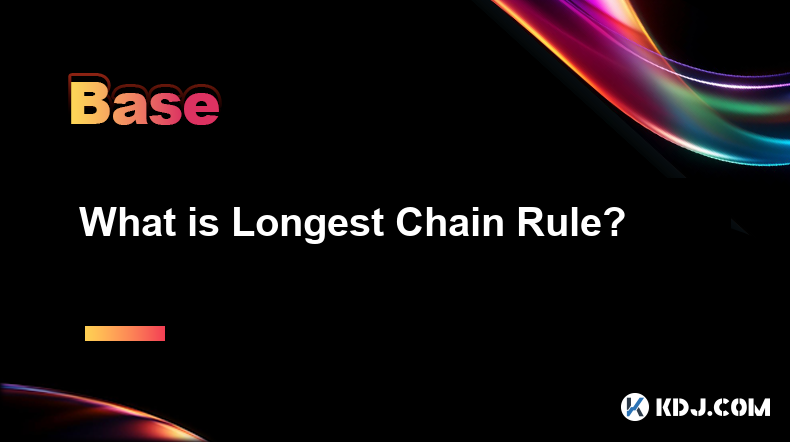-
 Bitcoin
Bitcoin $79,082.6827
3.50% -
 Ethereum
Ethereum $1,560.0062
3.98% -
 Tether USDt
Tether USDt $0.9997
0.06% -
 XRP
XRP $1.8602
5.51% -
 BNB
BNB $556.2989
2.52% -
 USDC
USDC $1.0000
0.01% -
 Solana
Solana $107.5152
6.58% -
 Dogecoin
Dogecoin $0.1509
9.35% -
 TRON
TRON $0.2341
4.61% -
 Cardano
Cardano $0.5791
6.99% -
 UNUS SED LEO
UNUS SED LEO $8.9706
0.98% -
 Toncoin
Toncoin $3.0929
5.15% -
 Chainlink
Chainlink $11.5169
7.22% -
 Avalanche
Avalanche $16.9259
10.59% -
 Stellar
Stellar $0.2273
5.53% -
 Shiba Inu
Shiba Inu $0.0...01128
4.06% -
 Hedera
Hedera $0.1571
16.84% -
 Sui
Sui $2.0151
10.99% -
 MANTRA
MANTRA $6.2756
1.74% -
 Polkadot
Polkadot $3.5782
4.75% -
 Bitcoin Cash
Bitcoin Cash $278.5433
7.96% -
 Litecoin
Litecoin $71.3553
7.85% -
 Dai
Dai $1.0001
0.02% -
 Ethena USDe
Ethena USDe $0.9990
0.07% -
 Bitget Token
Bitget Token $4.1184
6.69% -
 Pi
Pi $0.5811
2.84% -
 Hyperliquid
Hyperliquid $11.8292
17.03% -
 Monero
Monero $204.7626
7.78% -
 Uniswap
Uniswap $5.1181
5.31% -
 OKB
OKB $51.9115
3.31%
What is SHA-256?
SHA-256, a 256-bit hash function, secures Bitcoin transactions and blockchain integrity through its use in mining and verification processes.
Apr 07, 2025 at 11:15 pm

What is SHA-256?
SHA-256, or Secure Hash Algorithm 256-bit, is a cryptographic hash function that is part of the SHA-2 family of hash functions. It is widely used in the cryptocurrency world, particularly in Bitcoin and other blockchain technologies, for securing data and ensuring the integrity of transactions. This article will delve into the specifics of SHA-256, its applications in cryptocurrencies, and how it works.
The Basics of SHA-256
SHA-256 is designed to take an input, or 'message', and produce a fixed-size 256-bit (32-byte) hash value, typically rendered as a hexadecimal number, 64 digits long. The primary purpose of a hash function like SHA-256 is to ensure that even a small change in the input results in a significantly different output. This property is known as the avalanche effect.
The algorithm processes the input data in 512-bit blocks, and it uses a series of logical functions and bitwise operations to transform the data into the final hash value. The process is deterministic, meaning that the same input will always produce the same output, but it is also one-way, meaning it is computationally infeasible to reverse-engineer the original input from the hash.
Applications of SHA-256 in Cryptocurrencies
In the realm of cryptocurrencies, SHA-256 plays a crucial role in several key areas:
- Bitcoin Mining: Bitcoin uses SHA-256 as the proof-of-work algorithm. Miners compete to find a hash that meets the network's difficulty target, which involves repeatedly hashing the block header until a valid hash is found.
- Transaction Verification: Each transaction in the Bitcoin network is hashed using SHA-256, ensuring that any alteration to the transaction data will result in a different hash, thus maintaining the integrity of the transaction.
- Blockchain Integrity: The blockchain itself is secured by SHA-256, as each block contains the hash of the previous block, creating a chain of hashes that is extremely difficult to alter.
How SHA-256 Works
Understanding how SHA-256 works involves breaking down the process into several steps:
- Pre-processing: The input message is padded to ensure its length is a multiple of 512 bits. This involves adding a '1' bit, followed by as many '0' bits as necessary, and finally appending the original length of the message in bits as a 64-bit big-endian integer.
- Message Schedule: The padded message is divided into 512-bit blocks. Each block is further divided into 16 32-bit words. These words are then expanded into a 64-word message schedule using a series of bitwise operations.
- Hash Computation: The hash computation involves 64 rounds of processing, where each round uses a different set of constants and functions to mix the message schedule with the current hash state. The initial hash value is a set of eight 32-bit words, and after 64 rounds, these values are combined to produce the final 256-bit hash.
Security Features of SHA-256
SHA-256 is designed with several security features that make it suitable for use in cryptocurrencies:
- Collision Resistance: It is computationally infeasible to find two different inputs that produce the same output hash. This ensures that transactions cannot be altered without detection.
- Pre-image Resistance: It is extremely difficult to find an input that produces a specific output hash. This prevents attackers from reverse-engineering transactions.
- Second Pre-image Resistance: Given an input and its hash, it is hard to find another input that produces the same hash. This further enhances the security of the blockchain.
Practical Example of SHA-256 in Bitcoin
To illustrate how SHA-256 is used in Bitcoin, consider the process of mining a block:
- Block Header: The block header contains several pieces of information, including the version, the hash of the previous block, the Merkle root of the transactions, the timestamp, the difficulty target, and the nonce.
- Hashing Process: Miners take the block header and hash it using SHA-256. If the resulting hash does not meet the difficulty target, the miner changes the nonce and tries again. This process is repeated until a valid hash is found.
- Verification: Once a valid hash is found, other nodes on the network can verify the block by hashing the block header themselves and checking if the hash meets the difficulty target.
Implementing SHA-256 in Code
For those interested in seeing SHA-256 in action, here is a simple example using Python:
import hashlibExample input
input_data = "Hello, SHA-256!"
Create a SHA-256 hash object
hash_object = hashlib.sha256()
Update the hash object with the bytes of the input data
hash_object.update(input_data.encode('utf-8'))
Get the hexadecimal representation of the hash
hex_digest = hash_object.hexdigest()
print("SHA-256 Hash:", hex_digest)
This code snippet demonstrates how to use the hashlib library in Python to generate a SHA-256 hash from a given input string.
Frequently Asked Questions
Q: Can SHA-256 be used for other cryptocurrencies besides Bitcoin?
A: Yes, SHA-256 is not exclusive to Bitcoin and can be used in other cryptocurrencies. For example, Bitcoin Cash and Bitcoin SV also use SHA-256 for their proof-of-work algorithms. However, other cryptocurrencies like Ethereum use different hash functions such as Ethash.
Q: Is it possible to decrypt a SHA-256 hash?
A: No, SHA-256 is a one-way hash function, meaning it is designed to be irreversible. It is computationally infeasible to reverse-engineer the original input from the hash output.
Q: How does SHA-256 contribute to the security of a blockchain?
A: SHA-256 contributes to the security of a blockchain by ensuring the integrity of transactions and the immutability of the blockchain. Each block contains the hash of the previous block, creating a chain of hashes that is extremely difficult to alter. Additionally, the use of SHA-256 in proof-of-work algorithms makes it computationally expensive to attempt to alter the blockchain.
Q: Are there any known vulnerabilities in SHA-256?
A: As of now, there are no known practical vulnerabilities in SHA-256. However, like all cryptographic algorithms, it is subject to ongoing research and analysis. The cryptographic community continues to monitor and assess its security, but it remains a robust and widely trusted hash function.
Disclaimer:info@kdj.com
The information provided is not trading advice. kdj.com does not assume any responsibility for any investments made based on the information provided in this article. Cryptocurrencies are highly volatile and it is highly recommended that you invest with caution after thorough research!
If you believe that the content used on this website infringes your copyright, please contact us immediately (info@kdj.com) and we will delete it promptly.
- Dogecoin (DOGE) Witnesses Exciting Surge in Activity This Week as Whales Accumulate Coins
- 2025-04-08 16:20:12
- USDC's stablecoin is making waves as it records a surge in market cap
- 2025-04-08 16:20:12
- The meme coin market just got a jolt from one of the most controversial figures in modern politics, Donald Trump himself.
- 2025-04-08 16:15:12
- Fidelity Joins the Solana ETF Race with New Filing
- 2025-04-08 16:15:12
- Dogecoin (DOGE) Whales Have Been Buying the Dip, Pushing Prices 26% Higher
- 2025-04-08 16:10:12
- Bitcoin Has Reclaimed the $85,500 Level After a Strong Move to the Upside
- 2025-04-08 16:10:12
Related knowledge

What is Serenity?
Apr 08,2025 at 02:00pm
Serenity, also known as Ethereum 2.0, represents a major upgrade to the Ethereum blockchain. This ambitious project aims to address the scalability, security, and sustainability issues faced by the current Ethereum network. Serenity is not a single update but a series of upgrades that will transform Ethereum into a more efficient and robust platform. Th...

What is Checkpoint?
Apr 08,2025 at 05:08pm
A checkpoint in the context of blockchain and cryptocurrencies is a mechanism used to enhance the security and efficiency of a blockchain network. It serves as a snapshot of the blockchain at a specific point in time, which can be used to validate the integrity of the chain and prevent certain types of attacks. Checkpoints are particularly important in ...

What is Finality Gadget?
Apr 08,2025 at 04:14am
The Finality Gadget is a crucial component in the architecture of certain blockchain networks, particularly those that utilize a hybrid consensus mechanism. It plays a pivotal role in ensuring the finality of transactions, which means that once a transaction is confirmed, it cannot be altered or reversed. This article delves into the intricacies of the ...

What is Longest Chain Rule?
Apr 08,2025 at 07:50am
The Longest Chain Rule is a fundamental concept in blockchain technology, particularly in the context of cryptocurrencies like Bitcoin. This rule is crucial for maintaining the integrity and security of the blockchain network. In essence, the Longest Chain Rule dictates that the valid blockchain is the one with the most cumulative proof-of-work, which i...

What is Chain Reorganization?
Apr 08,2025 at 03:08pm
What is Chain Reorganization? Chain reorganization, often referred to as a 'reorg,' is a fundamental concept in blockchain technology that can significantly impact the integrity and operation of a blockchain network. Chain reorganization occurs when a blockchain network replaces a previously accepted block or series of blocks with a new set of blocks, l...

What is Orphan Block?
Apr 08,2025 at 05:00am
What is an Orphan Block?In the world of cryptocurrencies, particularly in blockchain technology, the term orphan block is frequently encountered. An orphan block is a block that has been mined and added to the blockchain but is later discarded or replaced by another block. This phenomenon occurs due to the decentralized nature of blockchain networks, wh...

What is Serenity?
Apr 08,2025 at 02:00pm
Serenity, also known as Ethereum 2.0, represents a major upgrade to the Ethereum blockchain. This ambitious project aims to address the scalability, security, and sustainability issues faced by the current Ethereum network. Serenity is not a single update but a series of upgrades that will transform Ethereum into a more efficient and robust platform. Th...

What is Checkpoint?
Apr 08,2025 at 05:08pm
A checkpoint in the context of blockchain and cryptocurrencies is a mechanism used to enhance the security and efficiency of a blockchain network. It serves as a snapshot of the blockchain at a specific point in time, which can be used to validate the integrity of the chain and prevent certain types of attacks. Checkpoints are particularly important in ...

What is Finality Gadget?
Apr 08,2025 at 04:14am
The Finality Gadget is a crucial component in the architecture of certain blockchain networks, particularly those that utilize a hybrid consensus mechanism. It plays a pivotal role in ensuring the finality of transactions, which means that once a transaction is confirmed, it cannot be altered or reversed. This article delves into the intricacies of the ...

What is Longest Chain Rule?
Apr 08,2025 at 07:50am
The Longest Chain Rule is a fundamental concept in blockchain technology, particularly in the context of cryptocurrencies like Bitcoin. This rule is crucial for maintaining the integrity and security of the blockchain network. In essence, the Longest Chain Rule dictates that the valid blockchain is the one with the most cumulative proof-of-work, which i...

What is Chain Reorganization?
Apr 08,2025 at 03:08pm
What is Chain Reorganization? Chain reorganization, often referred to as a 'reorg,' is a fundamental concept in blockchain technology that can significantly impact the integrity and operation of a blockchain network. Chain reorganization occurs when a blockchain network replaces a previously accepted block or series of blocks with a new set of blocks, l...

What is Orphan Block?
Apr 08,2025 at 05:00am
What is an Orphan Block?In the world of cryptocurrencies, particularly in blockchain technology, the term orphan block is frequently encountered. An orphan block is a block that has been mined and added to the blockchain but is later discarded or replaced by another block. This phenomenon occurs due to the decentralized nature of blockchain networks, wh...
See all articles






















































































